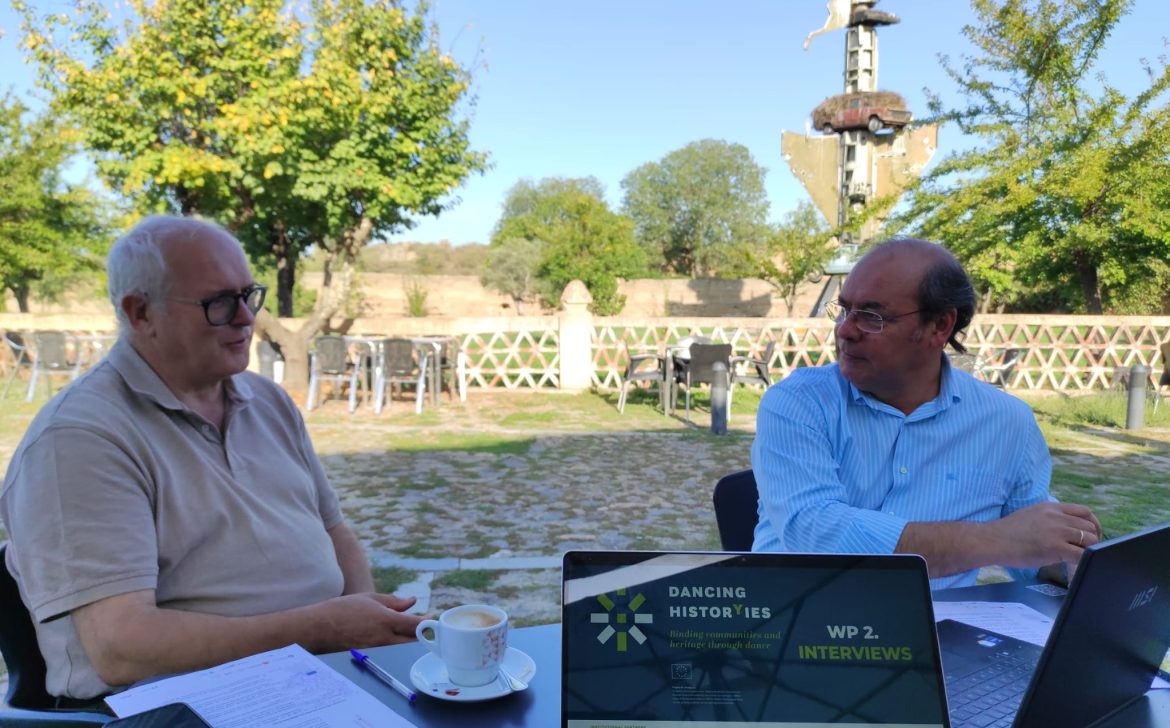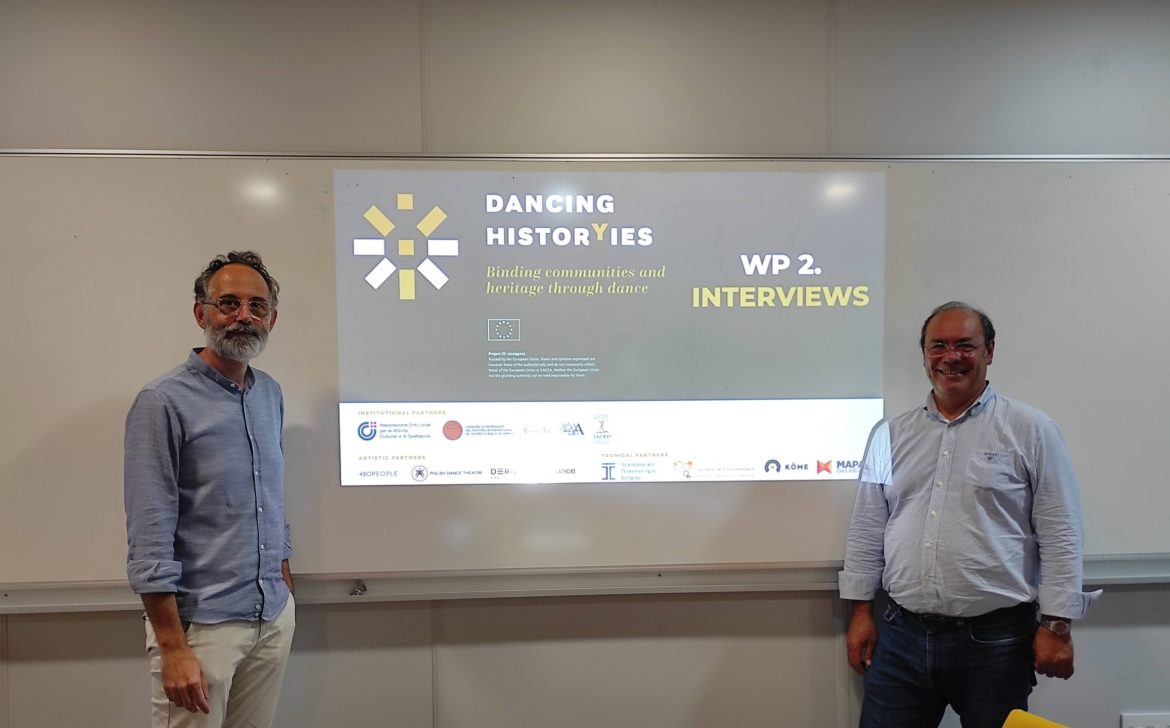Interview with José Antonio Agúndez García. Dancing Histor(y)ies – Model Definition
Jose Antonio Agúndez García holds a degree in Philosophy and Letters from the Faculty of Philosophy and Letters in Cáceres. He has served as the managing director of the Vostell Malpartida Museum from 1994 to 2011 and from 2015 to the present day. The museum, established in 1976, is dedicated to the work of Wolf Vostell, a renowned Spanish-German artist who was a key figure in contemporary art in the second half of the 20th century. It is located in the Natural Monument of Los Barruecos, in the Spanish town of Malpartida de Cáceres, with a current population of 4,426 inhabitants.
In the framework of the DANCING HISTOR(Y)IES – MODEL DEFINITION project, several interviews have been conducted with prominent local figures. Among them is an exclusive interview with the managing director of the Vostell Malpartida Museum. During this interview, various key questions were addressed regarding topics such as the definition of the local community, the importance of its participation in artistic and cultural activities, and the need to address its specific needs. The interviewee also mentioned examples of best practices and how community participation can promote gender equality and social inclusion. Below is a summary of the interviewee’s responses, accompanied by a corresponding video to provide a complete interview experience.
Questions
What is your definition of a local community? Please describe one or more local communities with which you are engaged or considering engaging.
The Vostell Museum Malpartida stands out for its close relationship with the local community and its surroundings. Located in the town that bears its name, it seeks to merge art with everyday life and regional history. Housed in a former building that was a wool laundry in the 18th/19th century, the museum integrates with the locality and its inhabitants, who contribute tradition and life to the project. Community participation, both individually and through local associations, has been fundamental since its inception almost 50 years ago.
The Fluxus art movement, which values the simple and the everyday, finds resonance in the life of Malpartida and is reflected in the museum. Artists reinterpret local culture, making the community essential in this creative process. Furthermore, collaboration with the University of Extremadura has further strengthened the ties between the museum and the community.
Since its establishment in the 1970s, the Vostell Museum Malpartida has evolved to become a point of reference in the regional art scene. Its influence extends to other collections of avant-garde art, contributing to modernizing the region in artistic terms.
What does the participation of local communities in the planning and execution of performing arts activities at a heritage site mean to you? How can it be achieved?
The Vostell Museum Malpartida has implemented a variety of activities to integrate the local community into its cultural project. Particularly noteworthy are the “SACOM” Contemporary Art Weeks, where local artists interacted with residents of the town. Events such as film screenings and Fluxus concerts were organized, providing novel experiences for the region. During these weeks, active participation from neighbours was encouraged, who shared their knowledge and traditional tools, fostering a sense of collaboration and belonging.
Furthermore, an initiative was undertaken to invite housewives to prepare traditional meals, as well as foreign artists to share dishes from their respective cultures. These culinary activities served to highlight the connection between tradition and contemporary art, demonstrating that art can be found in the simplest aspects of life. In Malpartida’s “art school,” everyone is both a student and a teacher, fostering an environment of mutual learning and collaboration. These actions have strengthened the bonds between the museum and the community, involving everyone in the project in a meaningful and enriching way.
What specific needs did you address when in engaging the local community for this purpose?
Contemporary art can often be challenging to grasp initially. One of the most important aspects is to explain the museum and the art it contains, providing information to people. This way, art has gradually become integrated into our lives. One action taken for the local community was when Vostell created a special print that museum association members could purchase, and this print is still present in many homes in Malpartida. It’s an example of how contemporary art gradually becomes integrated into the lives of residents, turning into a center of artistic reference today.
Could you provide examples of good practices at the local, national, or international level? Why do you think these practices are useful?
The focus is on achieving active participation from the audience to engage them with the exhibited art. Emphasis is placed on experiencing art firsthand, highlighting that mere online descriptions are insufficient for full comprehension. Providing complementary services, such as a café/restaurant, and organizing additional activities, like the summer nights “Under the Stars” with concerts and screenings, enhance the overall experience of the venue.
Furthermore, intergenerational exchange is valued, promoting contact between people of different ages through storytelling, workshops, and shared experiences. Collaboration with the Friends Association has been highly beneficial for involving local stakeholders interested in collaborating with the activities carried out here. In this regard, the continuous support and participation of the local community are appreciated.
How might community participation through performing arts be useful in promoting gender equality, social inclusion, and other significant social or environmental causes?
In relation to gender equality, women have always been present, and there have always been activities linked to this, such as on March 8th to celebrate International Women’s Day. Additionally, we involve both young and older women, with the latter sometimes finding it more difficult to understand contemporary art. However, for example, we have had older women participate in activities and performances at the museum, and not only do they understand it, they feel it.
This museum focuses heavily on inclusion and accessibility. We also welcome numerous groups of people with disabilities, or other marginalized social groups, or those who find it difficult to integrate, such as immigrants or prisoners. Over the years, many artistic activities and performances have been developed with them in order to spotlight what they have to say.


